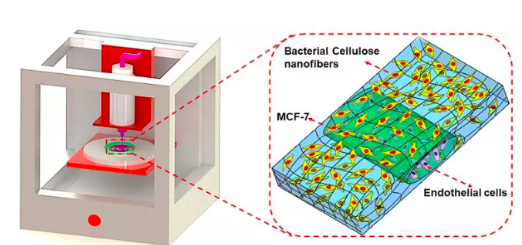
Bio 3D printing technology has the function of accurately controlling the three-dimensional structure and overcomes the shortcomings of current bio-manufacturing technology. The main problem with bio 3D printing today is the selection of inks and the optimization of the printing system. However, in addition to ink, soft matrices are one of the most critical components in 3D printing. The soft matrix maintains the independence of the print space structure. Extrusion 3D printing with soft substrates and inks is the most efficient way to print stand-alone structures, and based on its ease of handling and design freedom, it is the best choice for rapid prototyping of microfluidic systems. The microfluidic system can provide a good promoting environment for cell growth and proliferation.

Harvard Medical School Y. Prof. Shrike Zhang's research group used a low-cost, biocompatible nanomaterial-bacterial cellulose hydrogel as a potential new soft matrix to construct a bio-based 3D paper-based vascularized tissue model. Real-time screening of drugs is possible.
In this study, bio-ink was composed of petroleum jelly and liquid paraffin, and was coated in a bacterial cellulose soft matrix for printing. The paper-based vascularized tissue was realized by subsequent evaporation of water and deposition of bacterial cellulose to construct a three-dimensional network structure, remove ink from the matrix, construct microchannels, inoculate MCF-7 cells on the paper surface, inoculate HUVECs in the pipeline, etc. Rapid preparation of the model. The purpose of this research is to provide a new platform for building low-cost (lower device costs as low as 4 cents) organizational model, recently published in the world's top journal Nano Letters. The research result is entitled "Generation of Cost-Effective Paper-Based Tissue Models through Matrix-Assisted Sacrificial 3D Printing".
Copyright © 2017-2024 Nanjing Wiiking 3D Technology Co., Ltd. All rights reserved. Privacy & Security Policies